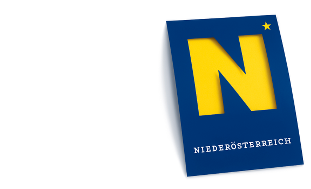Carnuntum
A unique archaeological landscape
Roman Carnuntum — the largest archaeological landscape in Austria — is a significant part of European cultural heritage. The still relatively high conservation status of the ancient remains and the extensive expanse of Carnuntum in a dynamically evolving region lead again and again to conflicts between monument protection and necessary social and economic development.
In particular, natural erosion - accelerated by modern agriculture and land consolidation - as well as raw material mining, road and railway construction, the construction of industrial parks and wind farms, expansion of settlements and the expansion of modern infrastructure threaten the cultural heritage hidden in the soil. In order to keep up with the rapidly advancing destruction of cultural heritage, accurate localization and assessment of the conservation status of the archaeological structures are essential for archaeological research and the preservation of monuments, as well as for land-use planning. Only through obtaining detailed knowledge of the archaeological remains can an archaeological landscape such as Carnuntum be protected in a long-term and sustainable manner, in addition to future planning of the economic development of this region.
Archaeological prospection at Carnuntum — twenty years of basic research
The prospecting methods, which are of great significance for future archaeological research, have been intensively developed in Austria since 1990 by the interdisciplinary research group Archeo Prospections® within the framework of a cooperation between the Central Institute for Meteorology and Geodynamics (ZAMG) and the University of Vienna. The archaeological landscape of Carnuntum has been particularly important in the context of these developments, where, over the past twenty years, numerous internationally renowned and respected results have been achieved.
On the basis of these first promising successes, the non-destructive archaeological exploration of the archaeological landscape of Carnuntum was given priority in 2001 by the Archaeological Council and a corresponding recommendation was made to the former Austrian Federal Ministry of Education. The previous geophysical prospection work in Carnuntum, on a total area of approx. 1 km2, was carried out in close cooperation with ZAMG Archeo Prospections®, the University of Vienna (VIAS, UHA), the Austrian Archaeological Institute, the Federal Memorial Office and the Austrian Academy of Sciences.
The founding of the Ludwig Boltzmann Institute for Archaeological Prospection and Virtual Archeology in 2010 has led to fundamental technological advances that have made the overall prospection of Roman Carnuntum logistically and technically (high-resolution and feasible financial costs) possible.
This investment in basic research forms the foundation for systematic, sustainable and future-oriented documentation of the archaeological heritage preserved in the soil of the archaeological landscape of Carnuntum.





